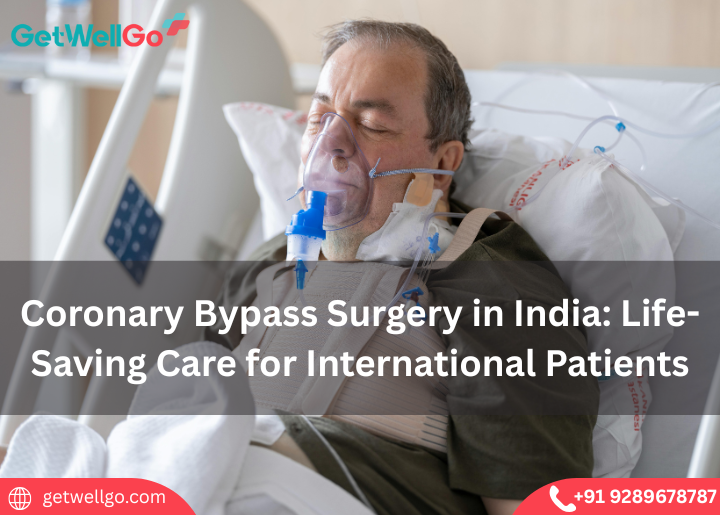
Plan Your Catheterisation Procedure in India – Step by Step Guide
Plan your catheterisation procedure in India with GetWellGo – a complete step-by-step guide for international patients seeking quality, affordable care.
Read MoreUnderstand the Bentall operation procedure, its benefits for heart health, and what patients can expect before, during, and after surgery with GetWellGo.

Category
CardiologyPublished By
GetWellGo TeamUpdated on
23-Apr-2025The Bentall procedure is done during an open heart surgery. It is performed to treat diseases or conditions that affect the aortic valve, the aortic root and at times a part of the ascending aorta such as:
The Bentall procedure is an open heart surgery where the operations include replacing three parts simultaneously:
They replace these with a special graft — a tube that is made from synthetic material equipped with an artificial or a tissue valve, sewn into it. The coronary arteries also get re-implanted which supply blood to the coronary or heart muscle.
The procedure is usually necessary for such individuals as:
Steps of the Bentall procedure in simple words:
The recovery time from Bentall surgery depends on the patient but the following is the common process:
Initial Recovery (Hospital Stay):
Post-Hospital Recovery:
Physical Activity:
Long-Term Recovery (3–6 months):
As with any other operation that involves the heart, the Bentall procedure has certain inherent risks. Nevertheless, it is carried out when the advantages exceed the risk factors associated with the procedure. The following are some of the risks that patients are likely to encounter during this surgical procedure:
Bentall Procedure Complications:
The cost of Bentall surgery in India depends on several factors. The following are the different factors that determine the cost of the procedure:
Bentall procedure is recommended for patients with considerable aortic disease processes that include the aortic valve, the aortic root, as well as the ascending aorta. It is usually done when such structures are impaired by conditions affecting the heart to pump blood efficiently and when other less invasive procedures cannot be done.
The following are the major indications to recommend a Bentall procedure:
|
Feature |
Bentall Procedure |
Valve-Sparing Root Replacement |
|
Indications |
Aortic valve disease + aortic root disease |
Aortic root dilation without significant valve disease |
|
Valve Replacement |
Aortic valve is replaced (mechanical or biological) |
Aortic valve is preserved and re-implanted |
|
Procedure Complexity |
High (involves replacing both valve and root) |
High (requires valve preservation and re-implantation) |
|
Post-Operative Anticoagulation |
Required if mechanical valve is used |
None required (no mechanical valve) |
|
Risk of Valve Degeneration |
High (mechanical valve may require replacement) |
Low (native valve preserved) |
|
Duration of Surgery |
Longer due to complex valve and root replacement |
Slightly shorter (focus on root replacement) |
|
Long-Term Follow-up |
Regular monitoring of valve function (mechanical or biological) |
Monitoring of the preserved valve for long-term function |
|
Ideal Candidates |
Severe aortic valve disease + root dilation |
Aortic root dilation with a functional valve |
|
Lifespan of the Solution |
10-20 years for biological valves, lifetime for mechanical valves |
Likely to last longer as it uses the patient's original valve |
GetWellGo is regarded as a leading supplier of healthcare services. We help our foreign clients choose the best treatment locations that suit their needs both financially and medically.
We offer:

Plan your catheterisation procedure in India with GetWellGo – a complete step-by-step guide for international patients seeking quality, affordable care.
Read More
Explore cost-effective MRA imaging abroad with GetWellGo. Trusted by international patients for quality diagnostics, accessible care, and peace of mind.
Read More
ABPM test abroad made easy! Learn why India is the best choice with GetWellGo—trusted by international patients for quality care, top doctors & affordability.
Read More
GetWellGo connects international patients to leading hospitals in India for safe, advanced Balloon Valvuloplasty. Start your heart-healing journey today.
Read More
Access advanced aneurysm treatment in India with GetWellGo. Trusted care, global patient support, and leading specialists for safe, affordable treatment.
Read More
Explore affordable Acute Coronary Syndrome treatment options in India. Learn about top hospitals, expert cardiologists, and advanced therapies trusted by international patients.
Read More
Affordable ischemic heart disease management in India with GetWellGo. Advanced cardiology care & personalized support for international patients.
Read More.png)
GetWellGo connects global patients with safe, affordable blood clot treatment in India. World-class care, expert doctors, and cost savings await.
Read More
Pacemaker surgery in India with GetWellGo – expert care, affordable costs & top hospitals for global patients. Learn what you need to know now.
Read More
Coronary bypass surgery in India offers life-saving cardiac care for international patients with expert surgeons, advanced technology, and affordable treatment options.
Read More
Modern coronary angiography in India with GetWellGo—affordable, accurate, and trusted by patients worldwide for exceptional international heart treatment
Read More
Discover affordable pediatric cardiac surgery in India for international patients, with expert child heart surgeons, advanced technology, and top-rated hospitals for safe care.
Read MoreFill the form below to get in touch with our experts.
Please fill in your details below and our experts will get back to you.